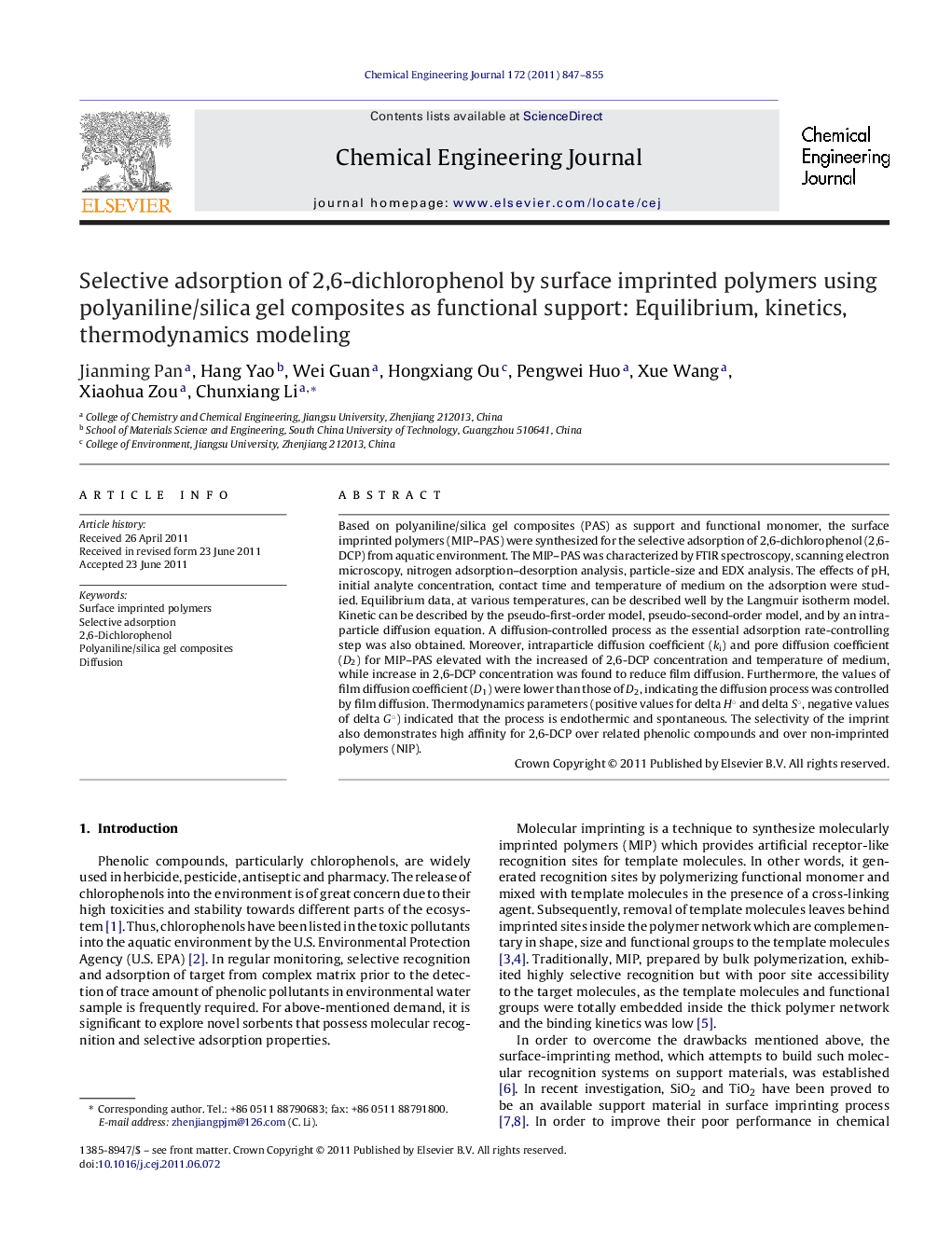| Article ID | Journal | Published Year | Pages | File Type |
|---|---|---|---|---|
| 150785 | Chemical Engineering Journal | 2011 | 9 Pages |
Based on polyaniline/silica gel composites (PAS) as support and functional monomer, the surface imprinted polymers (MIP–PAS) were synthesized for the selective adsorption of 2,6-dichlorophenol (2,6-DCP) from aquatic environment. The MIP–PAS was characterized by FTIR spectroscopy, scanning electron microscopy, nitrogen adsorption–desorption analysis, particle-size and EDX analysis. The effects of pH, initial analyte concentration, contact time and temperature of medium on the adsorption were studied. Equilibrium data, at various temperatures, can be described well by the Langmuir isotherm model. Kinetic can be described by the pseudo-first-order model, pseudo-second-order model, and by an intraparticle diffusion equation. A diffusion-controlled process as the essential adsorption rate-controlling step was also obtained. Moreover, intraparticle diffusion coefficient (ki) and pore diffusion coefficient (D2) for MIP–PAS elevated with the increased of 2,6-DCP concentration and temperature of medium, while increase in 2,6-DCP concentration was found to reduce film diffusion. Furthermore, the values of film diffusion coefficient (D1) were lower than those of D2, indicating the diffusion process was controlled by film diffusion. Thermodynamics parameters (positive values for delta H° and delta S°, negative values of delta G°) indicated that the process is endothermic and spontaneous. The selectivity of the imprint also demonstrates high affinity for 2,6-DCP over related phenolic compounds and over non-imprinted polymers (NIP).
► Polyaniline/silica gel composites (PAS) were prepared by in situ fast polymerization method. ► PAS were used as suport and functional monomer to conduct the surface-imprinting process. ► The structural characteristics, morphological information of as-prepared polymers were discussed. ► The adsorption equilibrium, kinetics, thermodynamics, selective recognition were investigated. ► The intraparticle diffusion, pore diffusion, film diffusion for 2,6-DCP adsorption were also studied.
